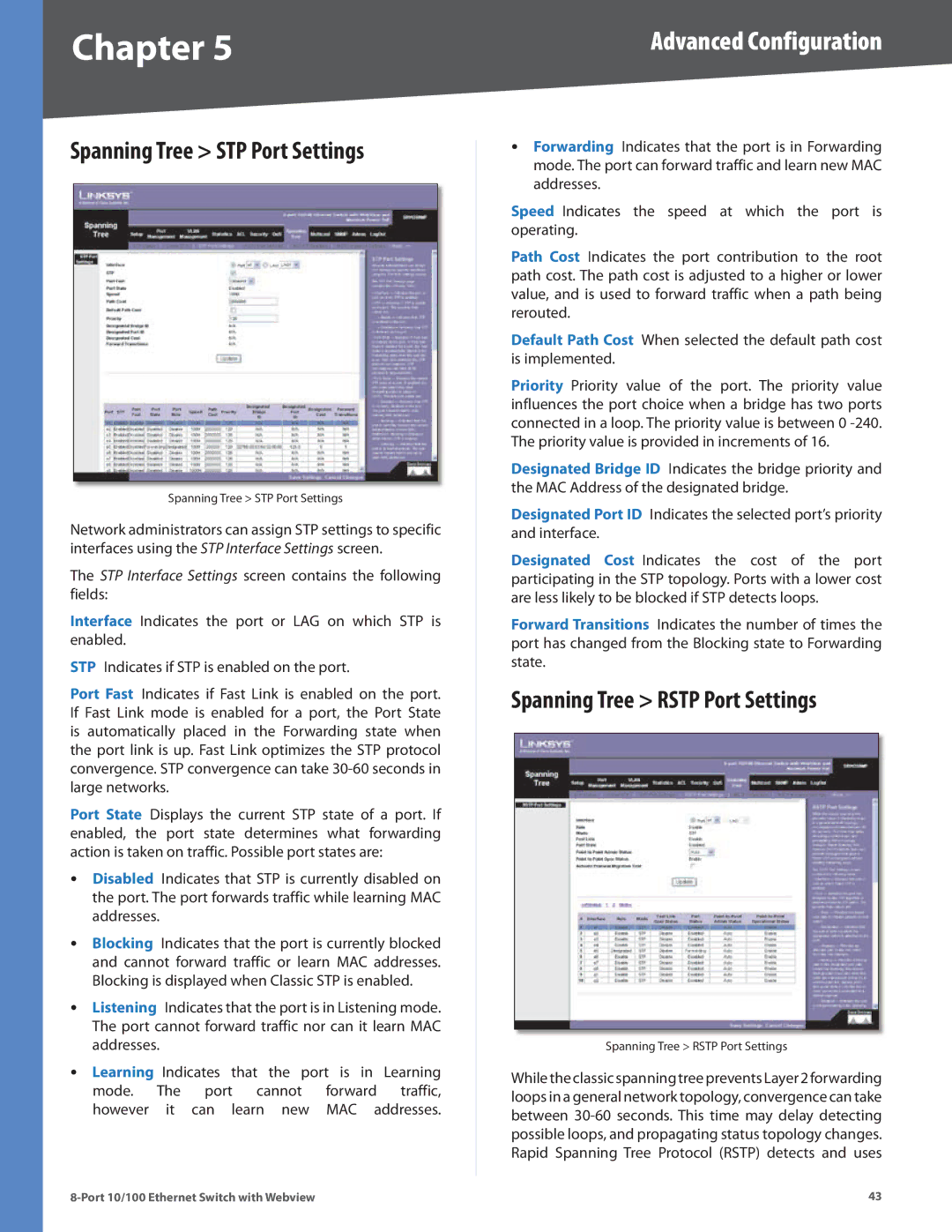
Chapter 5 | Advanced Configuration |
Spanning Tree > STP Port Settings
Spanning Tree > STP Port Settings
Network administrators can assign STP settings to specific interfaces using the STP Interface Settings screen.
The STP Interface Settings screen contains the following fields:
Interface Indicates the port or LAG on which STP is enabled.
STP Indicates if STP is enabled on the port.
Port Fast Indicates if Fast Link is enabled on the port. If Fast Link mode is enabled for a port, the Port State is automatically placed in the Forwarding state when the port link is up. Fast Link optimizes the STP protocol convergence. STP convergence can take
Port State Displays the current STP state of a port. If enabled, the port state determines what forwarding action is taken on traffic. Possible port states are:
•• Disabled Indicates that STP is currently disabled on the port. The port forwards traffic while learning MAC addresses.
•• Blocking Indicates that the port is currently blocked and cannot forward traffic or learn MAC addresses. Blocking is displayed when Classic STP is enabled.
•• Listening Indicates that the port is in Listening mode. The port cannot forward traffic nor can it learn MAC addresses.
•• Learning Indicates that the port is in Learning mode. The port cannot forward traffic, however it can learn new MAC addresses.
•• Forwarding Indicates that the port is in Forwarding mode. The port can forward traffic and learn new MAC addresses.
Speed Indicates the speed at which the port is operating.
Path Cost Indicates the port contribution to the root path cost. The path cost is adjusted to a higher or lower value, and is used to forward traffic when a path being rerouted.
Default Path Cost When selected the default path cost is implemented.
Priority Priority value of the port. The priority value influences the port choice when a bridge has two ports connected in a loop. The priority value is between 0
Designated Bridge ID Indicates the bridge priority and the MAC Address of the designated bridge.
Designated Port ID Indicates the selected port’s priority and interface.
Designated Cost Indicates the cost of the port participating in the STP topology. Ports with a lower cost are less likely to be blocked if STP detects loops.
Forward Transitions Indicates the number of times the port has changed from the Blocking state to Forwarding state.
Spanning Tree > RSTP Port Settings
Spanning Tree > RSTP Port Settings
While the classic spanning tree prevents Layer 2 forwarding loops in a general network topology, convergence can take between
43 |
